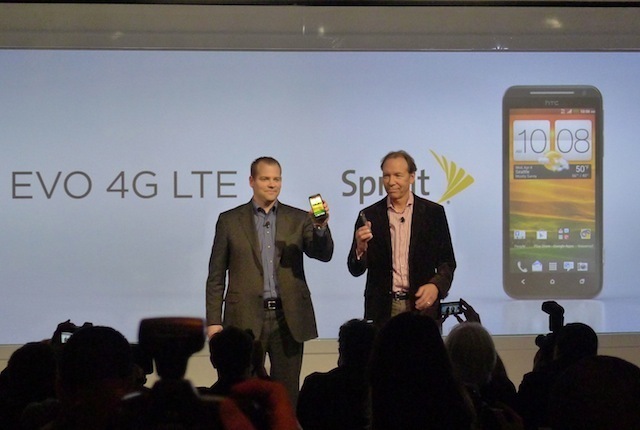
Sprint and HTC jointly announced the HTC EVO 4G LTE at a press conference Wednesday in New York City. The phone, which is Sprint's answer to the HTC One line that the phone company announced would be its flagship, is a doppelganger of the HTC One X arriving soon on AT&T.
As PC Magazine has pointed out, the HTC EVO bears many similarities to the largest HTC One, the One X, that is soon to arrive on AT&T. HTC announced at Mobile World Congress in February that it intended for the One series to be its worldwide flagship line. Unfortunately for HTC, Sprint reserved the right to name its new HTC phone, and chose to eschew the One branding in favor of its own established EVO moniker. Sprint enthusiasts need not worry, though: the EVO 4G LTE is effectively a One X with a different case design—and a kickstand.
The EVO 4G LTE has a 1.5GHZ Qualcomm Snapdragon S4 dual-core processor running Android 4.0 Ice Cream Sandwich skinned with HTC Sense 4. The battery is sizable at 2000mAh, as it needs to be when supporting 4G LTE, with 200mAh more than the HTC One X. The phone also has a giant 4.7-inch inch screen, .05 inches larger than the Samsung Galaxy Nexus but still dwarfed by the 5.3-inch Galaxy Note.
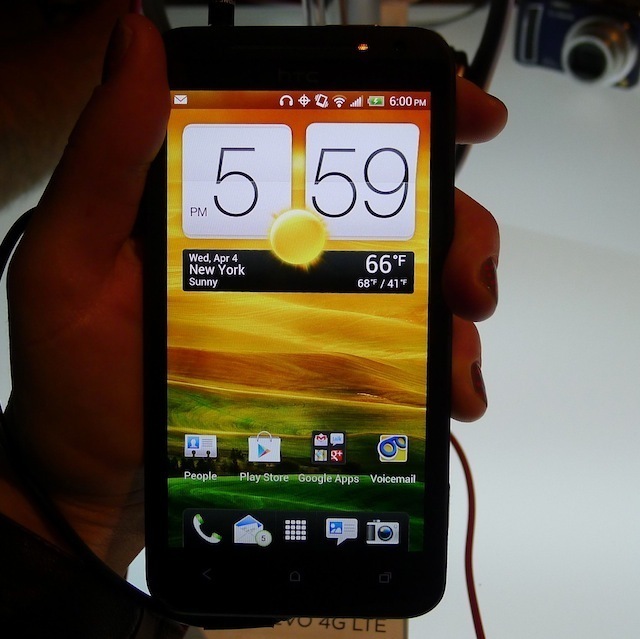
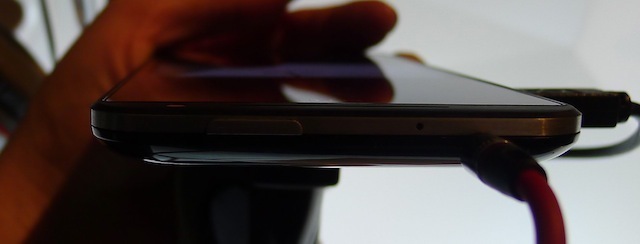

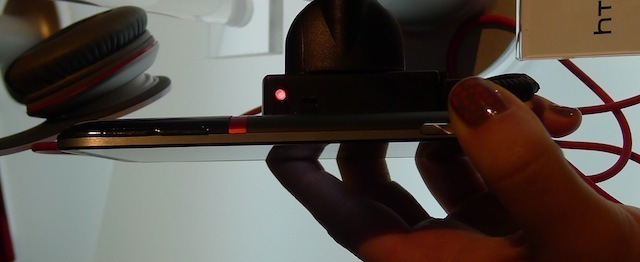
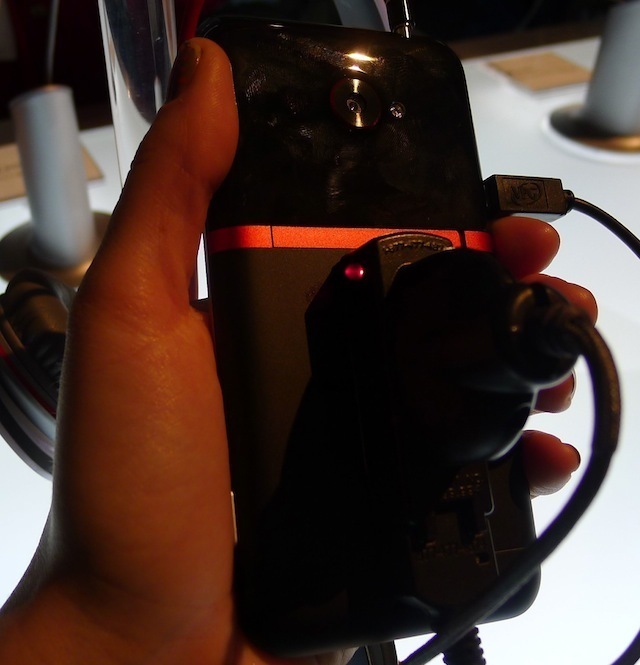
It was hard to get a feel for the phone with its security lead in place, but it is large. Fortunately, the screen takes up almost the entire front, with little space wasted on a bezel. The phone feels sturdy and the the design is well-thought-out, with solid tactile feedback in the buttons. We weren't big fans of the shiny part of the back of the phone, which seems to display fingerprints very easily.
The display is a 720p PenTile "Super LCD", an HTC rep told Ars, and it looked beautiful, if a tiny bit undersaturated (we may still be spoiled by the extra-saturated Nokia Lumia 900 screen). Not least of its attractive qualities were the the icons and UI courtesy of HTC Sense 4.

The new version of Sense, which was announced alongside the HTC One Series in February, has receded quite a bit in presence since 3.x. Rather than mauling the Android experience out of the phone, HTC seems to intend for Sense to make Android prettier and a bit more streamlined in the parts of the OS that it thinks may be rough.
We noticed some interesting Sense 4 touches during our short time with the phone. For example, scrollable areas show that you're at the end of a list by pulling the items apart, as if you're stretching them too far—effective, if odd. Sense 4 also takes some liberties with the multitasking display in Android 4, turning the display of apps into cards that page left-to-right and back, similar to webOS or Windows Phone. The cards also twirl on a vertical axis as they page, like iTunes' CoverFlow.
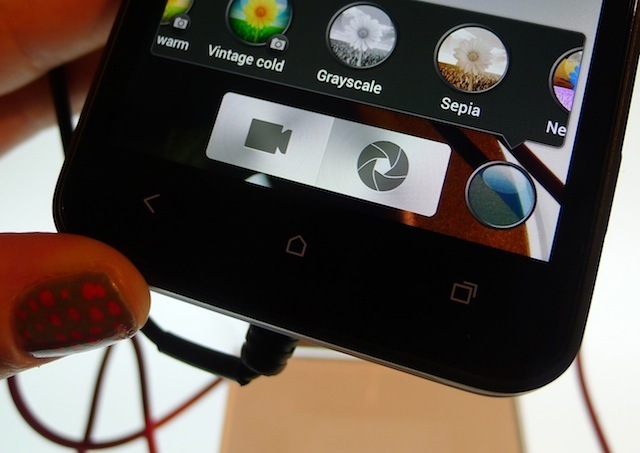
The EVO 4G LTE's 8-megapixel camera is meant to be one of the big draws of the device. HTC has given the phone a camera button, dedicated ImageChip, and "HTC ImageSense technology" as well as an f2.0 lens. The phone is able to do continuous shooting (4 frames per second for up to 99 shots) thanks to Sense 4. Next to the camera is a smart LED flash that will test lighting settings before taking a picture, as many SLRs do.
While testing out the camera, we noticed that the phone also has a menu option called "best shot," which uses an algorithm to select the best picture out of a group. If this worked impeccably, it would be a very welcome option. While we couldn't test the camera in a range of settings, we took a few test shots.
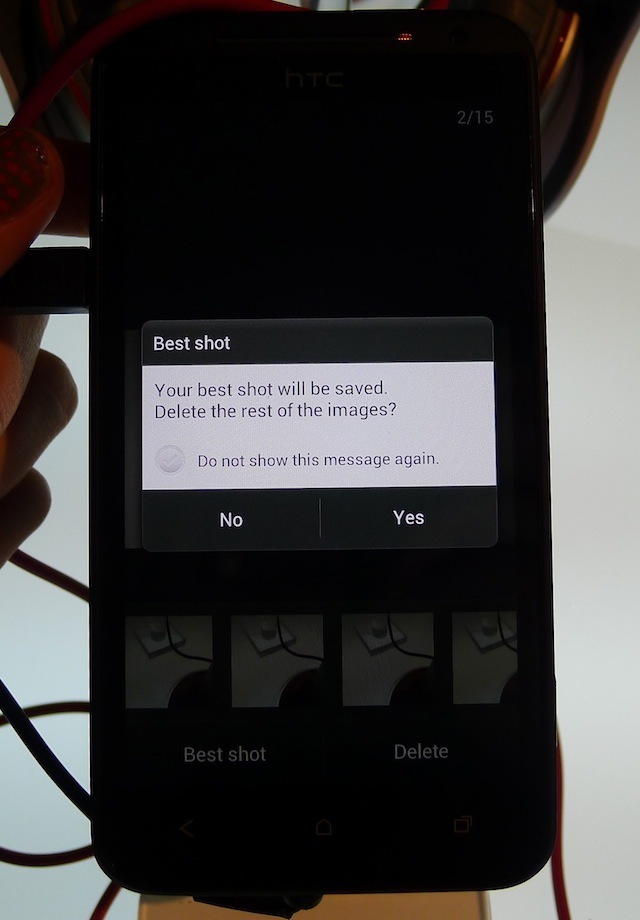
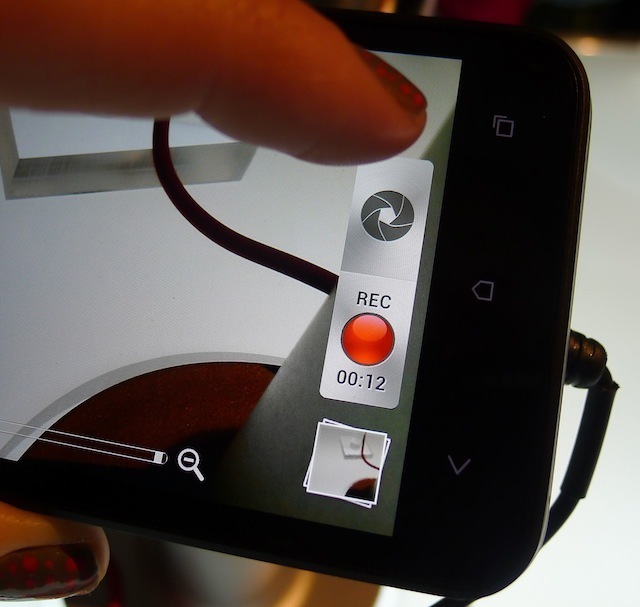
The phone didn't seem to be the best at working out a good focus point unless there was an obvious face to pick out, but it does allow tap-to-focus. The shots we tried looked good and weren't too grainy given the setting, though we'd have to see then off on a real screen to properly evaluate.
The EVO 4G LTE's camera app provides no preview of the pictures you take, but instead immediately stores them in the phone. While we sometimes like to see a preview, this means the phone is ready to take another picture nearly instantly.
We also tested out the continuous shooting mode. The phone quickly fired off the lens as promised, but the camera didn't seem to be able to enact a high enough shutter speed for every shot taken not to come out a bit blurry. The blurry photos came out of a low-lit setting, so the phone may have been compensating for the lack of light by keeping the shutter open longer. If so, continuous shooting may work better when the lighting is better.
We didn't get an opportunity to test out the HD voice feature of the phone, but we wouldn't get too excited about it at this point, anyway. Sprint doesn't plan to complete the rollout of HD voice on its network until the end of 2013, and even then only your fellow Sprint customers will be able to hear you in all your HD glory. We'd point out further that Sprint doesn't even provide 4G LTE at all yet, so there are many network updates to go before this phone can work as intended.
Sprint played a sample to the audience during the press event with standard cell phone audio and HD audio played back-to-back, and while HD wasn't crystal clear, the difference was very noticeable. It is incredible we've put up with the state of cell phone audio this long, and we hope other carriers follow suit in improving audio quality.
Many of the features described here are shared by the HTC One X coming to AT&T via the Sense 4, but now Sprint customers will have access to them too. Sprint and HTC stated that the EVO 4G LTE will be available in the second quarter of this year for $199.99 with a two-year contract. Pre-orders will open May 7.
reader comments
38